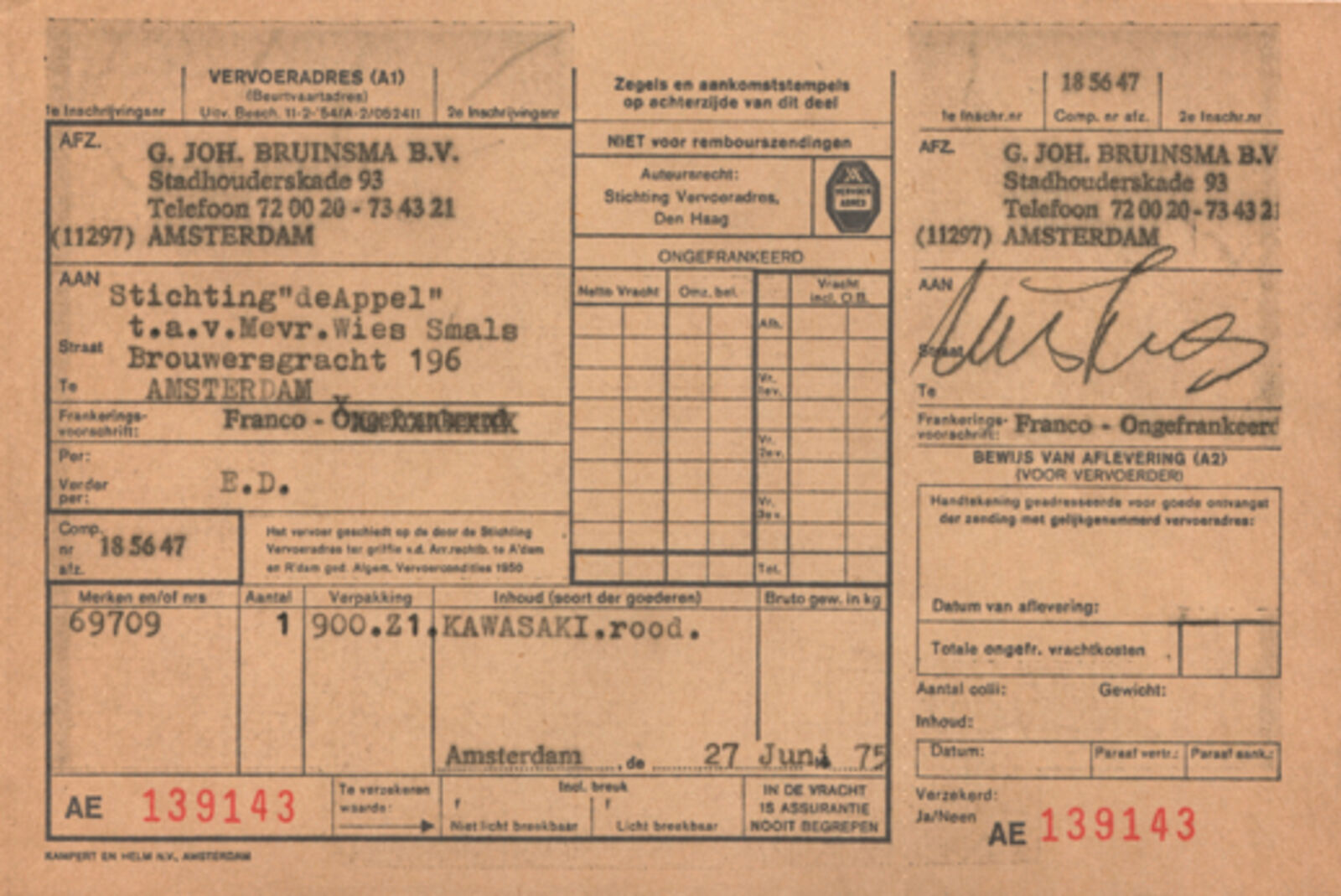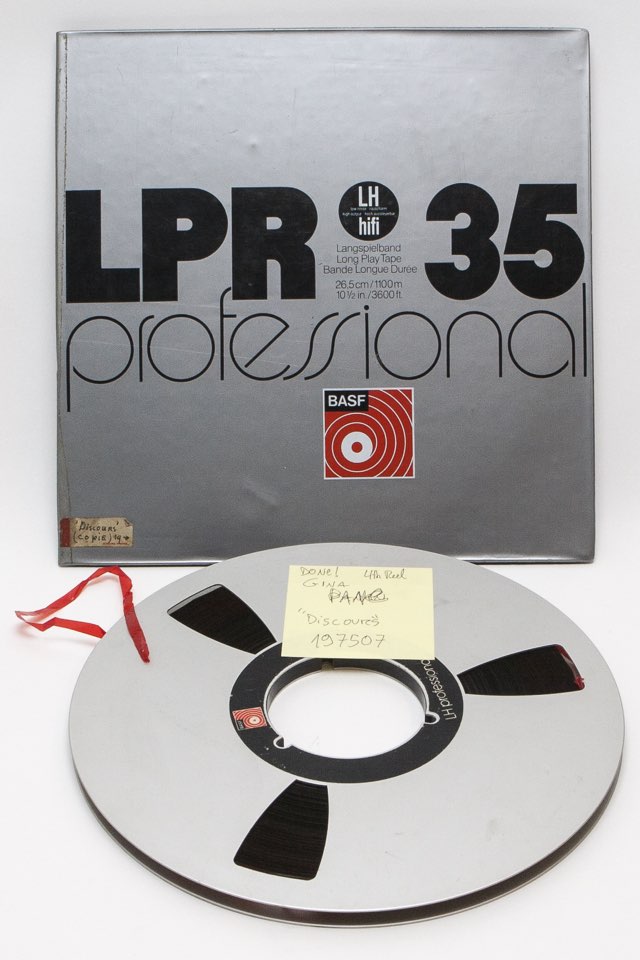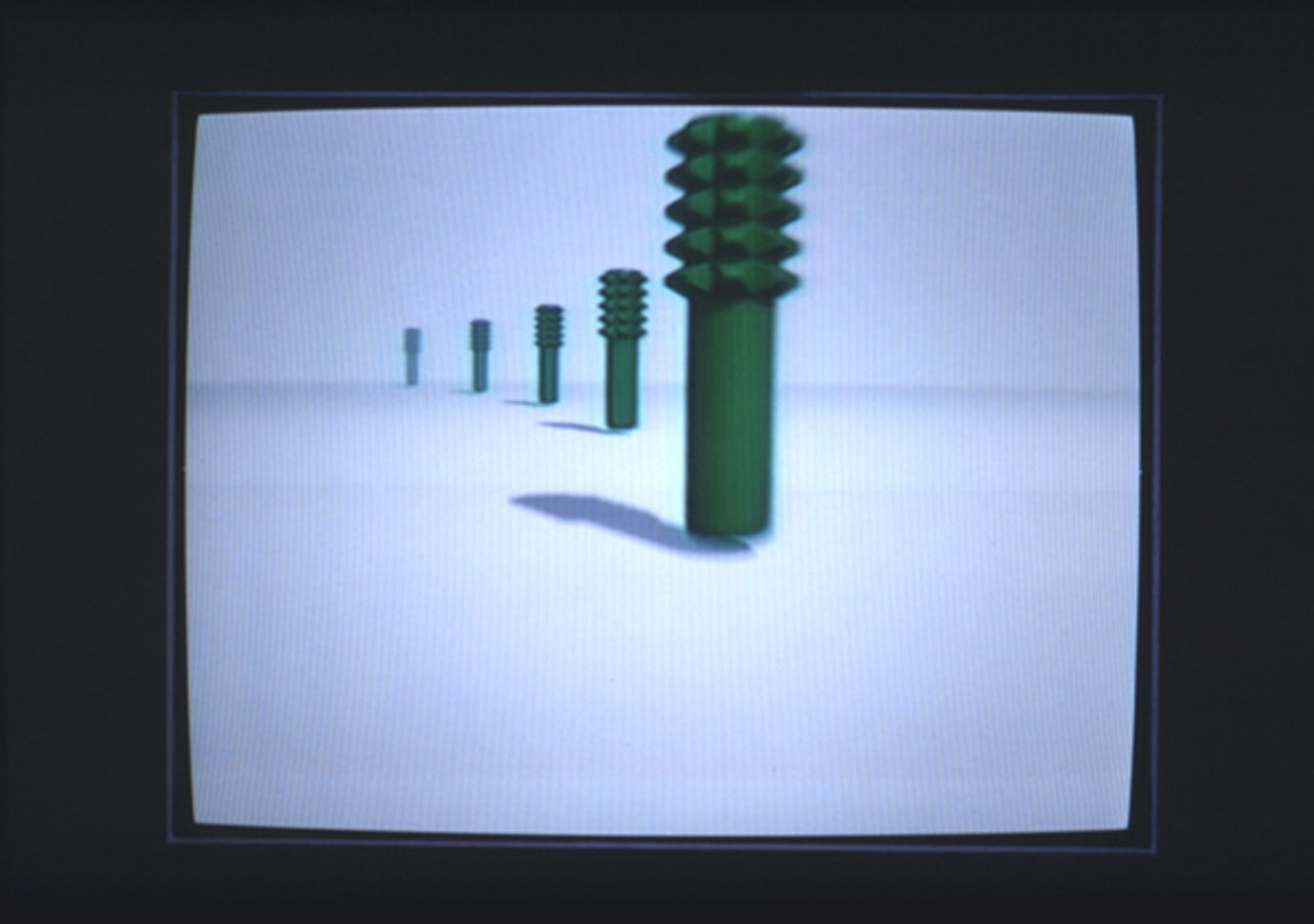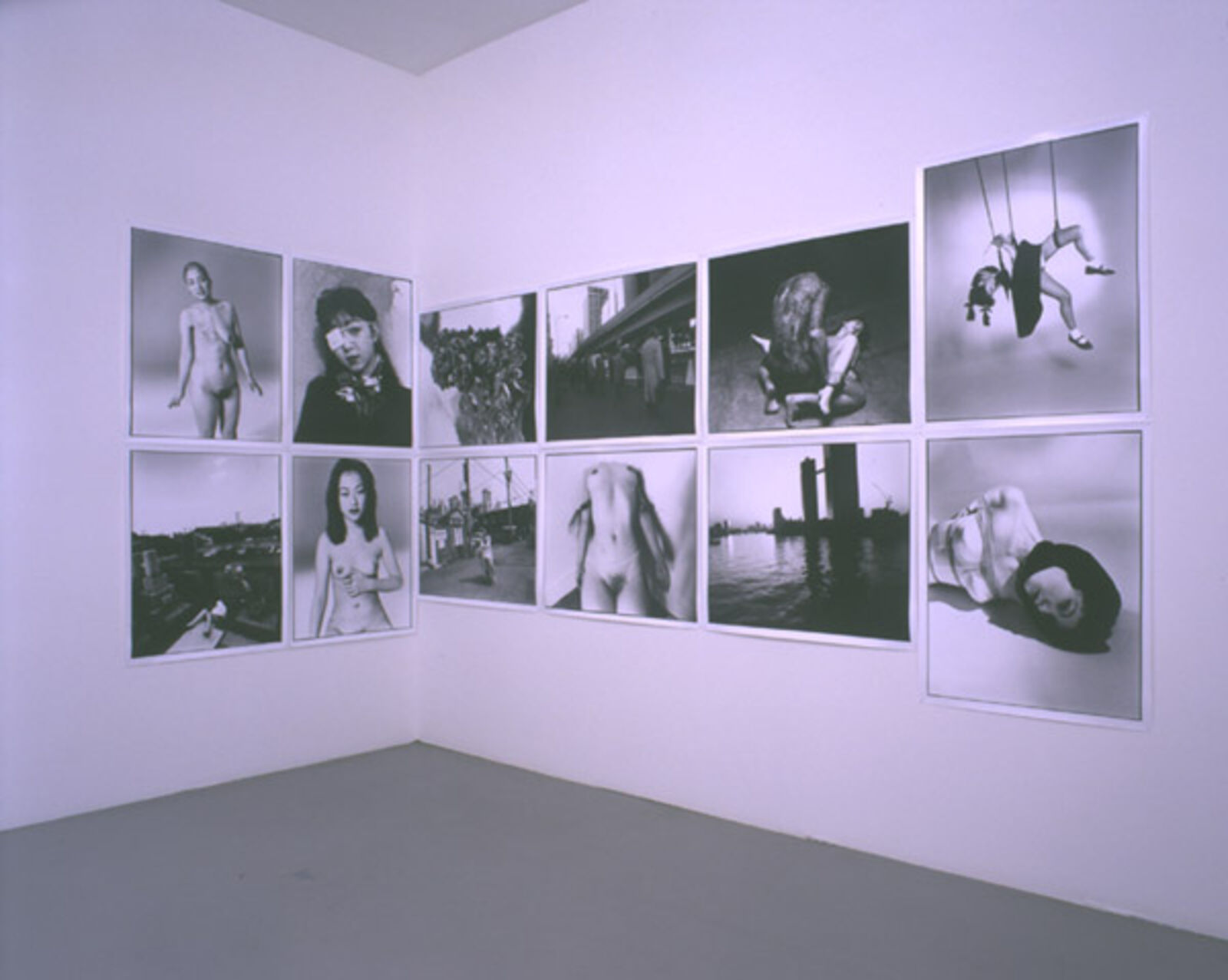Annette Lemieux "Annette Lemieux"
14.12.1991–25.01.1992
de Appel, Prinseneiland 7, Amsterdam
de Appel, Prinseneiland 7, Amsterdam
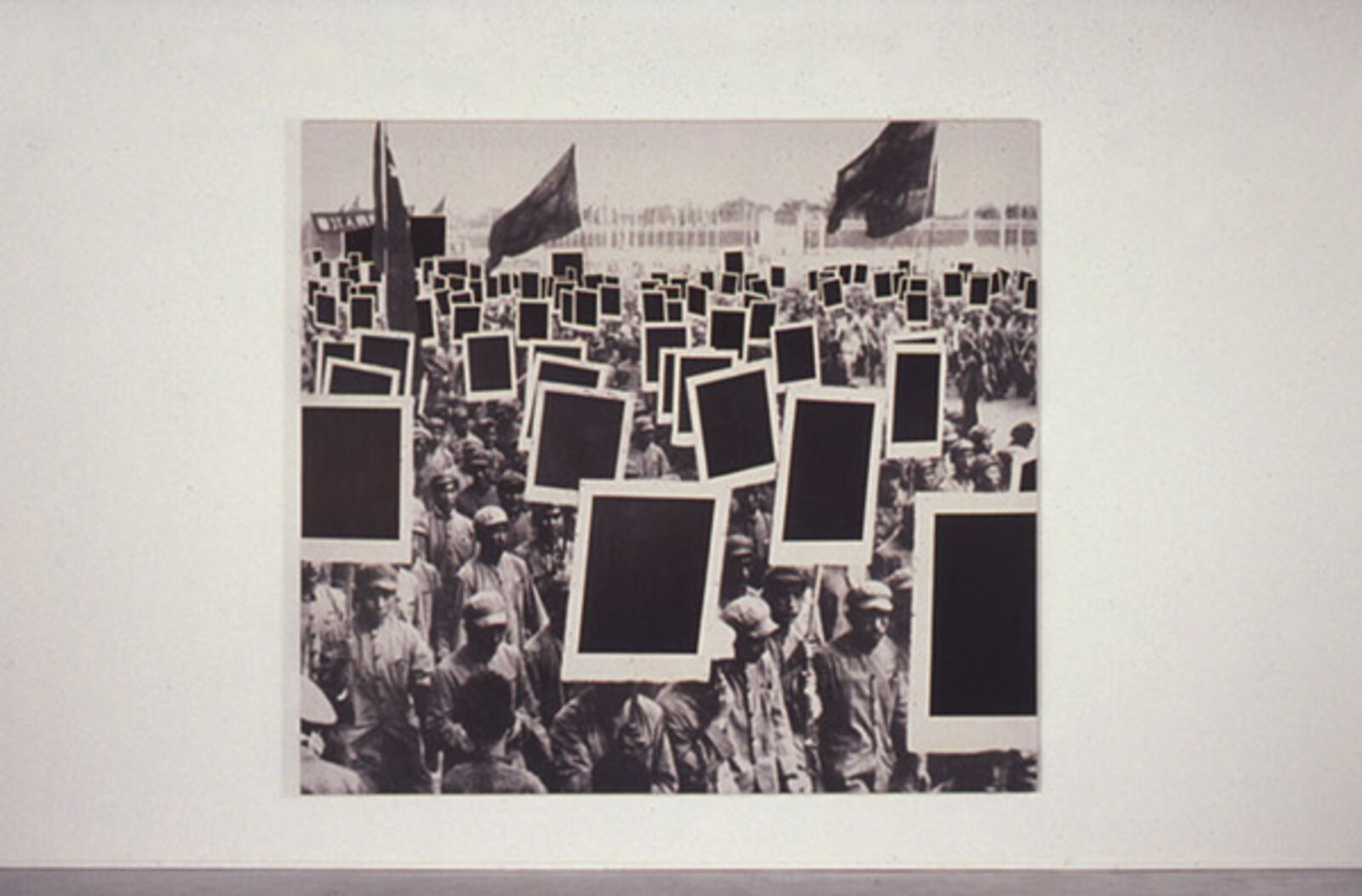
Black mass, 1991
© Cary Markerink
© Cary Markerink
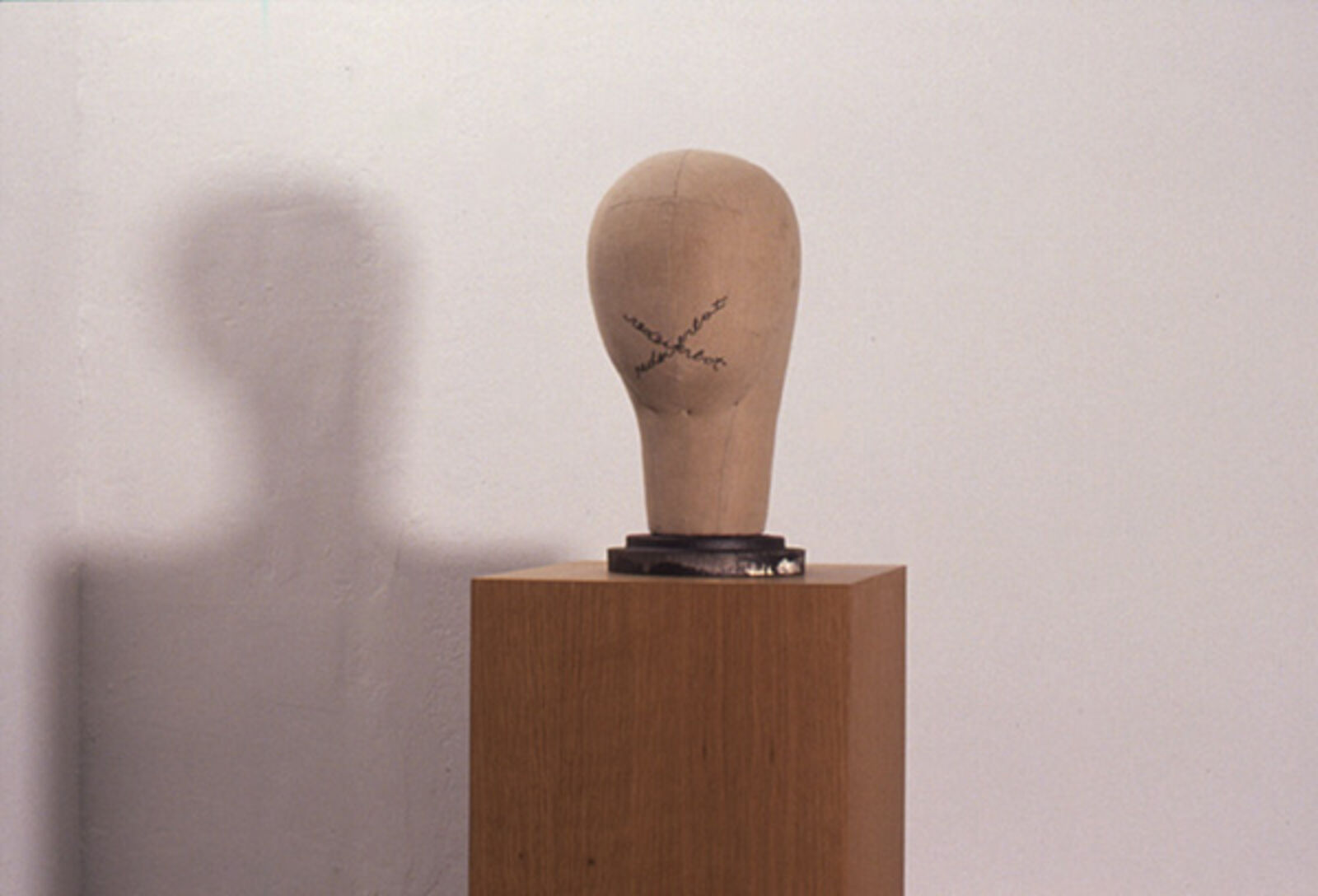
Redeverbot, 1991
© Cary Markerink
© Cary Markerink

Black mass, 1991
© Cary Markerink
© Cary Markerink

Redeverbot, 1991
© Cary Markerink
© Cary Markerink
'For many years Annette Lemieux has been collecting objects and images to use in her own work. Through this appropriation she is seeking generally valid symbols whose meaning is not restricted to the arts and the media alone. Her interest in ‘la condition humaine' gives the work a strong social undertone. Thus a work dealing with the second World War wil1 not do so literally, but take instead the individual experience of war. ‘The images I use have a lot to do with a sense of loss. The logical way to explain a sense of loss is perhaps to present something about loss. So the work is not necessarily at all about war, but maybe it has something to do with loss, loss of certain ideals.' Lemieux collects images that have contributed to our cultural consciousness which she then organises in a strict, almost minimalist way. Her method is cool rather than expressionist even when conveying human experiences. Titles play an important role in her work which does not evolve from form, style or technique, but from an idea: a verbal production, not a stylistic one. In this way Lemieux is related to such Neo-conceptualists as Robert Gober and Rosemarie Trockel in whose work one finds a synthesis of the passion for the idea and the object. Lemieux's work therefore shows no stylistic unity and a solo show would look more like a group exhibition. ‘It's not really an act of avoiding the signature. It's more like I have to work this way because each piece is an idea. I would be so bored creating visual variations.’ In De Appel she shows eight works which embrace such subjects as victimizing. torture, punishment, suffering, cruelty, manipulation, censorship, death, loss and blind loyalty. But says Lemieux: 'I'm not a visual evangelist. I don't like the idea of solutions'.' (Invitation text by Edna van Duyn)
Catalogue:
Annette Lemieux, 1992. De Appel & Galerie Montenay, Paris. Text: Nancy Stapen. Dutch & English. Bio- and bibliography included. 24 Pages: 4 f.c. 29.5 x 18.5 cm. Softcover. SOLD OUT
See also

